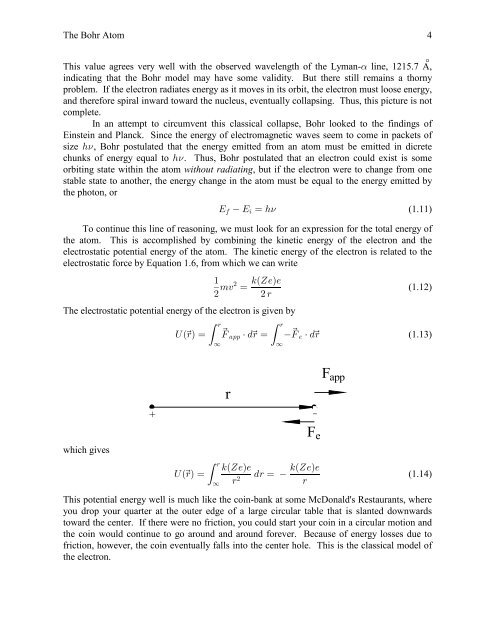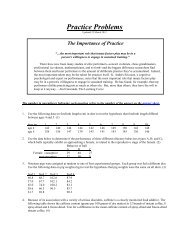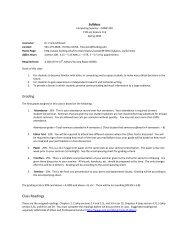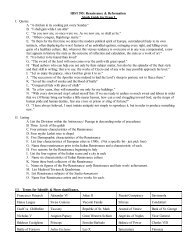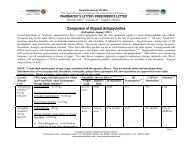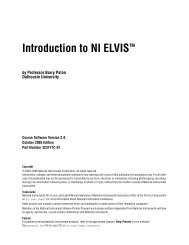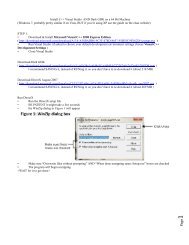The Bohr Model of Hydrogenic Ions
The Bohr Model of Hydrogenic Ions
The Bohr Model of Hydrogenic Ions
You also want an ePaper? Increase the reach of your titles
YUMPU automatically turns print PDFs into web optimized ePapers that Google loves.
<strong>The</strong> <strong>Bohr</strong> Atom 4<br />
This value agrees very well with the observed wavelength <strong>of</strong> the Lyman- α line, 1215.7 A, °<br />
indicating that the <strong>Bohr</strong> model may have some validity. But there still remains a thorny<br />
problem. If the electron radiates energy as it moves in its orbit, the electron must loose energy,<br />
and therefore spiral inward toward the nucleus, eventually collapsing. Thus, this picture is not<br />
complete.<br />
In an attempt to circumvent this classical collapse, <strong>Bohr</strong> looked to the findings <strong>of</strong><br />
Einstein and Planck. Since the energy <strong>of</strong> electromagnetic waves seem to come in packets <strong>of</strong><br />
size 2/ , <strong>Bohr</strong> postulated that the energy emitted from an atom must be emitted in dicrete<br />
chunks <strong>of</strong> energy equal to 2/ . Thus, <strong>Bohr</strong> postulated that an electron could exist is some<br />
orbiting state within the atom without radiating, but if the electron were to change from one<br />
stable state to another, the energy change in the atom must be equal to the energy emitted by<br />
the photon, or<br />
I I œ 2<br />
0 3 / (1.11)<br />
To continue this line <strong>of</strong> reasoning, we must look for an expression for the total energy <strong>of</strong><br />
the atom. This is accomplished by combining the kinetic energy <strong>of</strong> the electron and the<br />
electrostatic potential energy <strong>of</strong> the atom. <strong>The</strong> kinetic energy <strong>of</strong> the electron is related to the<br />
electrostatic force by Equation 1.6, from which we can write<br />
<strong>The</strong> electrostatic potential energy <strong>of</strong> the electron is given by<br />
which gives<br />
" 5Ð^/Ñ/<br />
7@ # œ<br />
(1.12)<br />
# # <<br />
Y Ð


